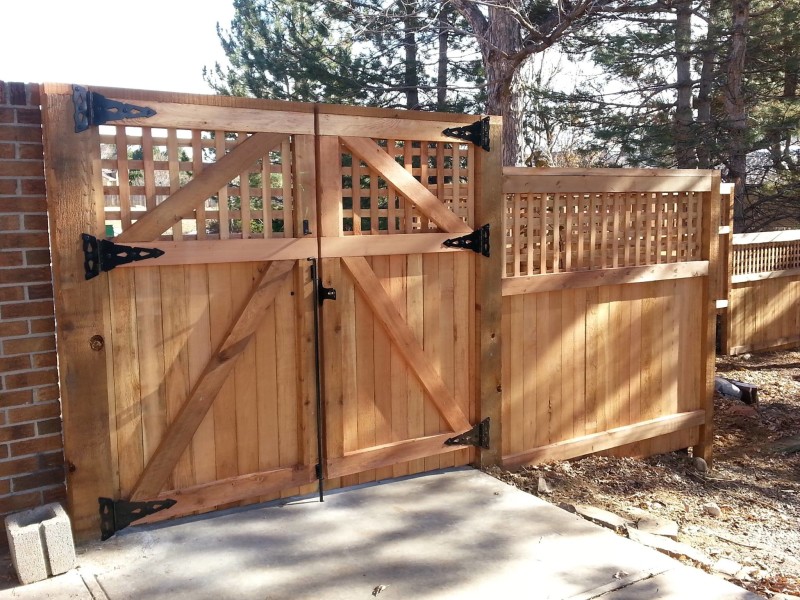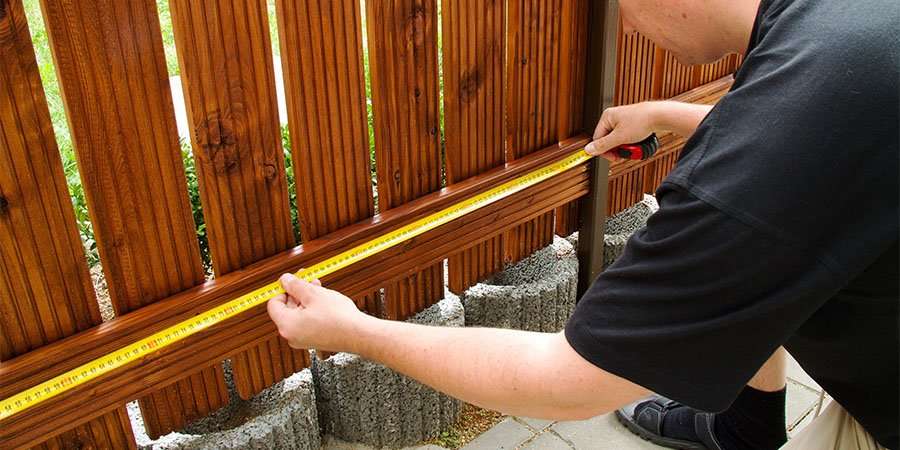All Categories
Featured
Whether it's strong winds, hefty rainfall, or severe heat, climate can create substantial damages to your fencing, leading to expensive fixings or even a full replacement. Below are some useful suggestions to protect your fencing from weather-related damages.
Vinyl Fence: Vinyl is resistant and very long lasting to wetness, decomposing, and bending. It also requires little maintenance and can withstand harsh climate condition without fading or breaking. Steel Fencing: Wrought iron or light weight aluminum fences are solid and resilient versus wind and rain. They are prone to rust over time if not appropriately secured. Applying a rust-resistant covering can help preserve their look and integrity. Compound Secure Fencing: Made from a mix of wood fibers and plastic, composite fencings incorporate the very best qualities of both products. They're resistant to rot, pest, and decay damage while providing the look of natural timber. By choosing the ideal product, you can ensure that your fence is better geared up to stand up to the elements.
Wetness Protection: Sealants create a waterproof barrier, protecting against rain from seeping into the wood and causing rot or mildew. UV Defense: Sealants and spots block UV rays, which can dry out and blemish the timber. Protect Look: Regularly using a protective finish will certainly keep the fencing's all-natural beauty and protect against discoloration or fading. To guarantee resilient defense, reapply sealer or discolor every one to two years, relying on your climate and fencing wear.
![]()
![]()
In addition, cleansing your fence can help remove dirt, mold, and particles that can create long-lasting damage. For wood fencings, delicately stress clean the surface to get rid of crud, while plastic fencings can be cleansed with a mild cleaning agent option.
Final thought. Whether you're choosing the best products, applying safety layers, or strengthening messages, these straightforward strategies can aid shield your fencing from the elements, saving you money and prolonging the life-span of your fence for years to come. Normal examinations and upkeep are essential to capturing concerns early, so be sure to remain on top of your fence's care throughout the periods.
- Select Weather-Resistant Materials. Among the very first steps in securing your fence from weather-related damage is selecting the best material. Some materials are normally extra immune to the aspects, reducing the need for continuous repair work. :
Vinyl Fence: Vinyl is resistant and very long lasting to wetness, decomposing, and bending. It also requires little maintenance and can withstand harsh climate condition without fading or breaking. Steel Fencing: Wrought iron or light weight aluminum fences are solid and resilient versus wind and rain. They are prone to rust over time if not appropriately secured. Applying a rust-resistant covering can help preserve their look and integrity. Compound Secure Fencing: Made from a mix of wood fibers and plastic, composite fencings incorporate the very best qualities of both products. They're resistant to rot, pest, and decay damage while providing the look of natural timber. By choosing the ideal product, you can ensure that your fence is better geared up to stand up to the elements.
- Safeguard Wood Fencings with Sealers and Discolorations. Wood fencings are specifically vulnerable to moisture, UV rays, and severe temperature levels. To secure your wood fence from these concerns, using a high-grade wood sealer or discolor is vital.
Wetness Protection: Sealants create a waterproof barrier, protecting against rain from seeping into the wood and causing rot or mildew. UV Defense: Sealants and spots block UV rays, which can dry out and blemish the timber. Protect Look: Regularly using a protective finish will certainly keep the fencing's all-natural beauty and protect against discoloration or fading. To guarantee resilient defense, reapply sealer or discolor every one to two years, relying on your climate and fencing wear.

- Enhance the Fencing Posts. To avoid this, consider strengthening your fence messages by installing concrete footings or making use of stronger products for message supports. If you live in an area with hefty winds or seasonal frost, this included security will certainly help protect your fence from damage.
- Cut Surrounding Plants. Tree branches and creeping plants expanding near or over your fence can cause considerable damage in stormy weather. Not just will this safeguard your fence, yet it will certainly also improve the general appearance of your lawn.
- Use Windbreaks. Wind is a major aspect in weather-related fence damage. A windbreak acts as an obstacle that reduces the straight influence of wind on the fencing, protecting against damage from high winds and gusts.

- Address Drain Issues. Poor drain is a major contributor to fence damage, especially for wooden fences. Water that accumulates around the base of fencing blog posts can trigger them to rot over time. Ensure that the ground around your fencing has correct drainage so water doesn't swimming pool and trigger degeneration. Mounting a French drainpipe or adding gravel around the base of the messages can assist route water away from the fence. This easy fix can make a massive difference in stopping dampness damages and protecting your fence.
- Normal Evaluations and Upkeep. Routine maintenance is crucial for safeguarding your fence from weather condition damages. Examine your fencing regularly, specifically after serious weather events, to determine any type of indicators of damages.
In addition, cleansing your fence can help remove dirt, mold, and particles that can create long-lasting damage. For wood fencings, delicately stress clean the surface to get rid of crud, while plastic fencings can be cleansed with a mild cleaning agent option.
- Use a Rust-Resistant Covering to Steel Fences. Steel fences, especially those made of iron or steel, are prone to corrosion when exposed to wetness and humidity. To secure your steel fence from corrosion, use a rust-resistant coating or paint.
Final thought. Whether you're choosing the best products, applying safety layers, or strengthening messages, these straightforward strategies can aid shield your fencing from the elements, saving you money and prolonging the life-span of your fence for years to come. Normal examinations and upkeep are essential to capturing concerns early, so be sure to remain on top of your fence's care throughout the periods.
Latest Posts
Find Out Reduce Expenses on Car Maintenance with Montclare Auto Repair’s Special Deals
Published May 23, 25
1 min read
Explore WyHy Federal Credit Union Maximizes Your Savings on Loans and Savings
Published May 22, 25
1 min read
Explore Limited-Time Auto Repair Specials in Chicago at Montclare Auto Repair
Published May 21, 25
1 min read
More
Latest Posts
Find Out Reduce Expenses on Car Maintenance with Montclare Auto Repair’s Special Deals
Published May 23, 25
1 min read
Explore WyHy Federal Credit Union Maximizes Your Savings on Loans and Savings
Published May 22, 25
1 min read
Explore Limited-Time Auto Repair Specials in Chicago at Montclare Auto Repair
Published May 21, 25
1 min read